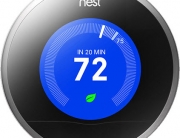The internet of things is everywhere and is connected globally through the internet but often devices in the same room can talk to each other, that is the key impediment to the full implementation and adoption of the internet of things.
You’ve probably heard of Nest, WeMo, Revolv, Fit Bit, Smartthings or some of the more popular IOT devices.
All of these devices talk to your phone, your WiFi router or other connection you have to the internet and upload that data somewhere to a server (Cloud) for you to then interact with that data to view your workout, see how much energy you saved or track who entered your home while you were away. They are amazing advances in technology that allow us to gather, aggregate and analyze more data than ever. The problem is is that most of these devices and data are built in Silo’s and companies are unwilling to release that information into the marketplace. Additionally there are some devices that have open API’s available for developers but many them are closed or allow only for limited development by third parties. This means that even if the devices are speaking the same language
(Wifi, Z-Wave, Zigbee) they are often not able to talk to each other because of fortress policies that have been built around the device IP (Intellectual Property).
The other reason that IOT devices can’t talk to each other in the same rooms is that not all IOT devices speak the same language. There are a number of different languages which are the wireless standards of Wifi, Z-Wave, Zigbee, and Bluetooth. The different protocols serve different purposes for each device and each application but in the end they all need to have a connection to the internet and in most cases the interface you control them with is your mobile phone. The connection to the internet is usually via WiFi or Ethernet connection for home based IOT devices that then have a hub that communicates either Z-Wave or Zigbee signals to the individual devices.
Even though the devices communicate on different wireless standards they do most likely have one universal thing in common that is monumental to speeding the adoption of the internet of things……They have a smart phone application on either the Apple or Android store.
What does that mean ? Well even though the devices can’t communicate with each other though the wireless standards(WiFi, Z-Wave, Zigbee & Bluetooth) and companies have created fortress policies around their IP, the devices still provide most all of the information the device collects through the app interface. While the data may be somewhat disguised through the app interfaces it is still there and available for applications running in the background on your phone to pick up on.
The future connectivity of the internet of things most likely will not be in the internet or cloud but actually in the processing power on your phone with applications that take data from all of the “silo” applications on your phone integrate that data into one interface and a collect if for use. The data could then be used to figure out just how many people with smart thermostats can turn down their AC to prevent a grid blackout or seamlessly turning on the music you were just listening to in your car on in your house before you walk in the door.
The mobile phone is the battle ground to knock down the silo’s that have been built around the IOT and speed the adoption of the IOT. We already see forward looking companies such as IFTTT http://www.ifttt.com create business models based on being a software integrator of devices rather than create the devices themselves. This approach is analogous to what Bill Gates& Steve Jobs did, they didn’t invent the computer, or the first software for them they created an easy visual platform that would allow common users to navigate and integrate the software that was already out there. What will the OS for the IOT look like ?
Think about that for a minute while you view this answer through a browser on an operating system that was once nothing more than a abstract concept to integrate software.
If you are interested in learning more about the IOT or integrating your house with the latest IOT technology check us out www.greenfii.com



Leave A Comment